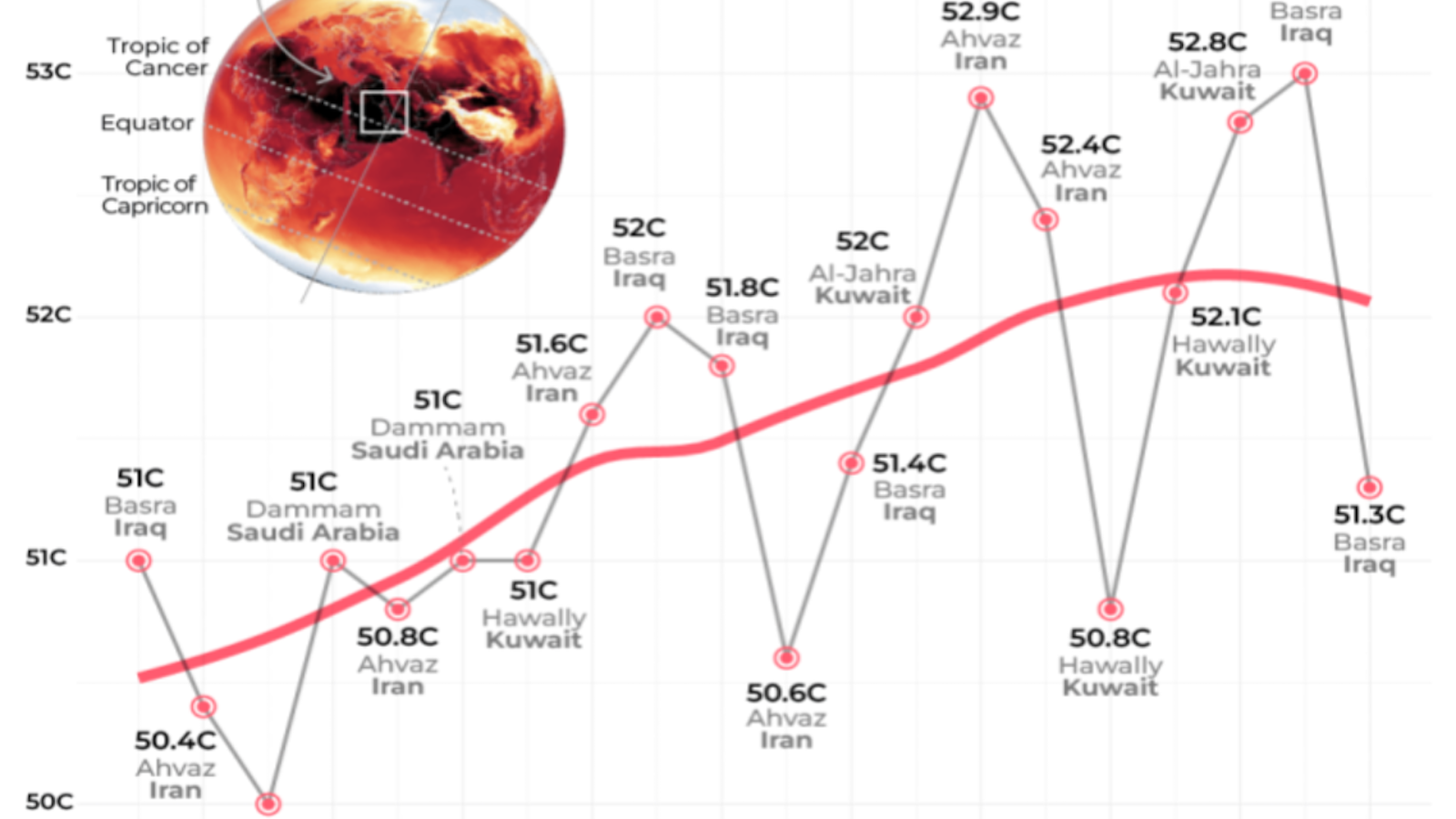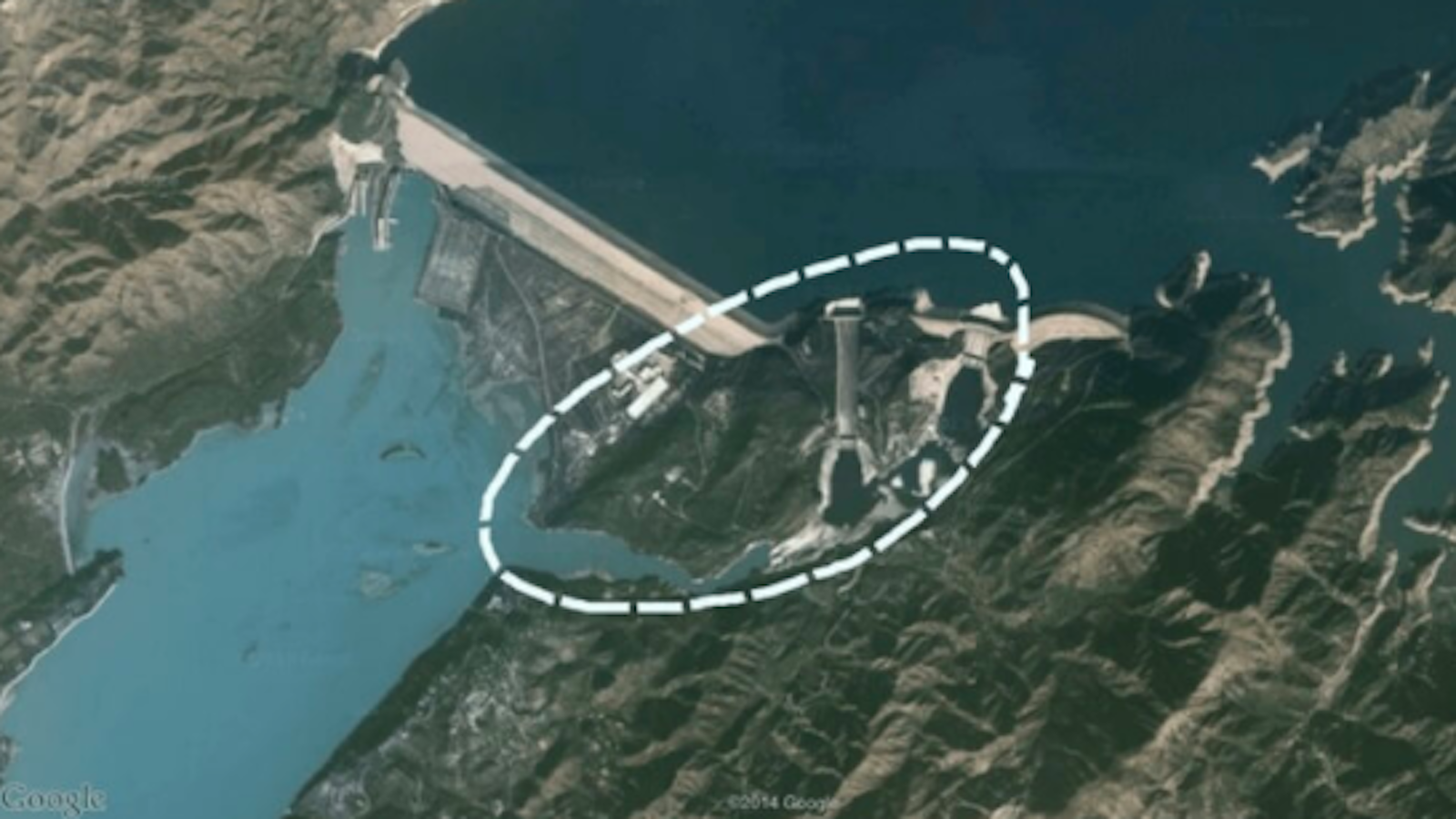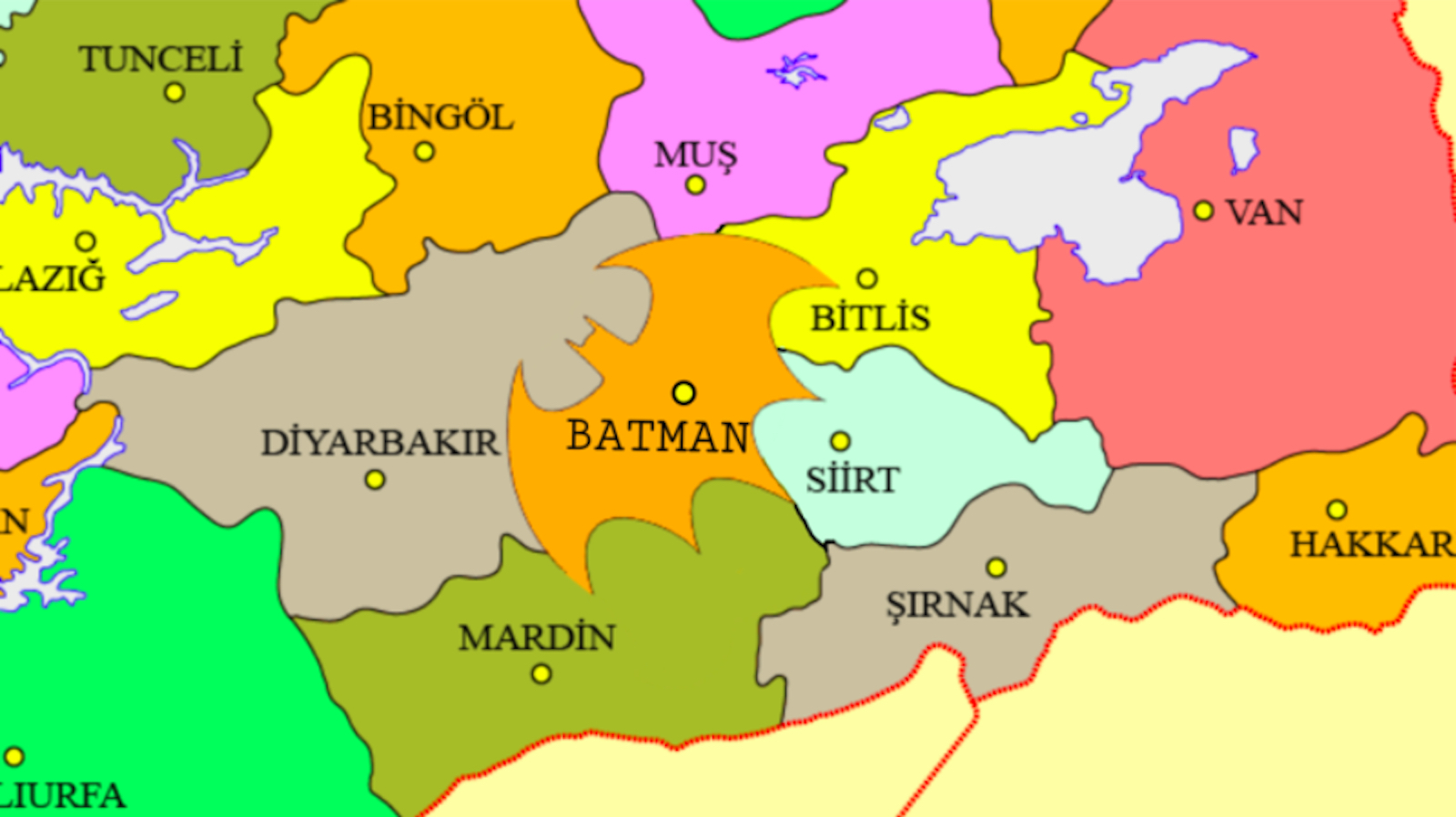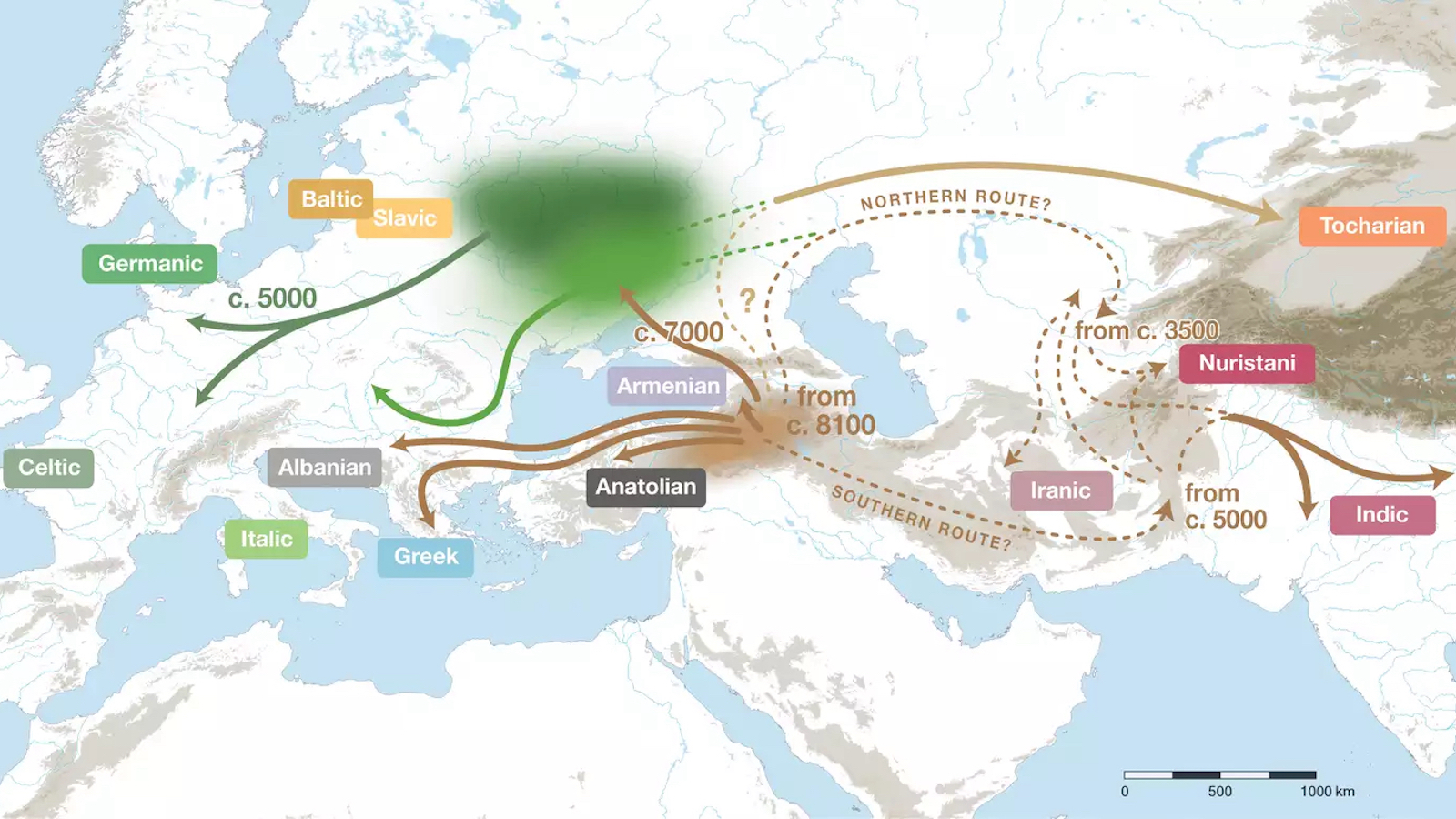The mountains where Neanderthals forever changed human genetics

- Many modern humans carry up to 4% Neanderthal DNA.
- Scientists have now identified where this interbreeding likely happened.
- The two species made love (and war) in the Zagros Mountains.
The genomes of most modern humans contain up to 4% Neanderthal DNA. Scientists have now determined where much of that exchange likely happened: the Zagros Mountains in Iran.
Around 28,000 years ago, give or take a millennium or two, the Neanderthals let out their last breath. The deathbed of our cousin species may have been Gibraltar. The natural fortress, pinned to southern Spain’s Mediterranean coast, was one of the final refuges of the Neanderthals. Meanwhile, the rest of the world was being overrun by Homo sapiens: us.
Beware of dog
It’s still debated how and why we outcompeted the Neanderthals. One piece of that prehistoric puzzle may be that we domesticated dogs, and they didn’t. This could have given us a critical edge both in hunting and domestic safety.

However, Neanderthals haven’t vanished completely. There could be one sitting in your chair right now, reading this article. Well, sort of. Many modern humans have some admixture of Neanderthal DNA, an indication that Homo sapiens and Homo neanderthalensis knew one another, also in the Biblical sense.
Their genetic heritage is much smaller in sub-Saharan Africa: from none to 0.3%, depending on whom you ask. This indicates that the DNA exchange between both human species most likely occurred outside Africa, though there is some evidence of minimal remigration back into Africa: Ethiopians and other peoples in the Horn of Africa have around 1% Neanderthal-derived DNA.
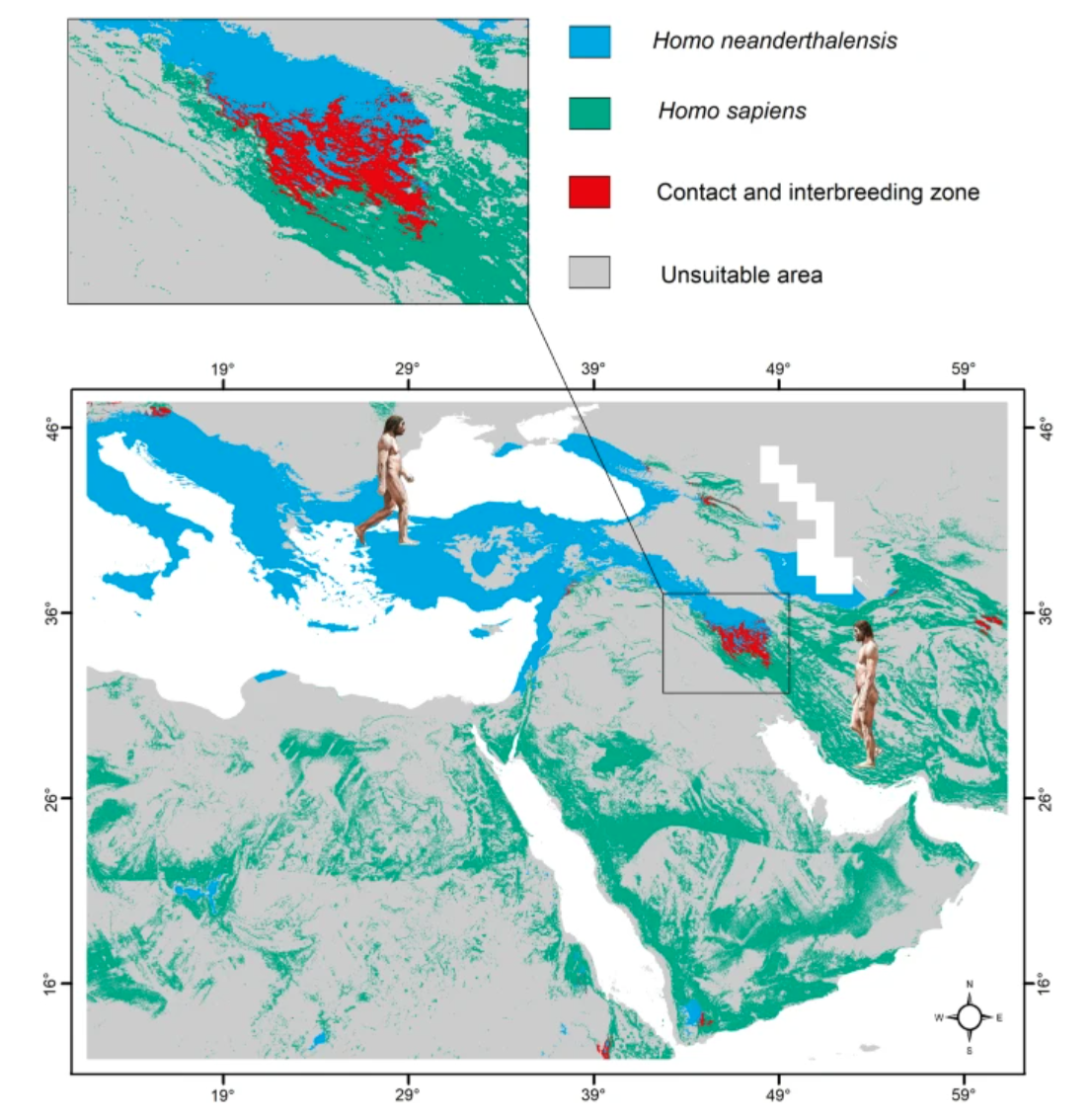
Scientists have now identified the most likely location of our interspecies love nest. Using ecological niche modeling, a team of archaeologists charted the geographical distribution of Neanderthals and Homo sapiens throughout Southeast Europe and Southwest Asia, finding where they most likely interacted: the central area of the Zagros Mountains, in western Iran.
Warm weather, varied topography, rich biodiversity
That part of the Zagros range, which runs from southeastern Turkey down to the Persian Gulf, was an ideal habitat for Neanderthals, with its warm weather, varied topology, and rich biodiversity. The area was also straight on the path of Homo sapien groups migrating out of Africa into Eurasia, so this is likely where they met, and mated, around 47,000 to 65,000 years ago, in the Late Pleistocene.
“This region, which is located at the crossroads of the Afrotropical and Palearctic realms, matches the distribution of anatomically modern Homo sapiens and Neanderthals, respectively,” the scientists say in their study, published in Scientific Reports.
“Thus, we hypothesised that these two species first met and interbred at the border of these two biogeographic realms where environmental conditions facilitated niche overlap and resource partitioning by providing a highly diverse habitat rich in resources.”
This chimes with previous archaeological finds. The area has previously yielded a great number of early human remains, both sapiens and Neanderthal, confirming its importance to both species. The famous Neanderthal “flower burial” was discovered in Shanidar Cave in Iraqi Kurdistan.
The most remarkable Neanderthal remains ever
This cave has yielded the remains of ten Neanderthals who lived between 65,000 and 35,000 years ago, including three of the most remarkable Neanderthal remains ever found.
Shanidar 1, known to his excavators as “Nandy,” was an elderly Neanderthal male (between 30 and 45 years old) who survived several debilitating injuries, indicating that he was cared for by his community.
Shanidar 4 was a male in the same age range who was found with significant deposits of pollen around the body, long thought to be the remains of a string of flowers. That would have been the earliest example of a ritualistic grave deposit, and further evidence of empathy among Neanderthals.
However, a more recent analysis of this “flower burial” suggests the pollen may have been introduced to the site by the burrowing of the jird, a gerbil-like rodent native to Iran, or by the nesting of solitary bees.
The Kurdish cave has also yielded evidence of the opposite of empathy. Shanidar 3 was a man in his forties who died of a stab wound, perhaps inflicted by a long-range projectile.
Some scientists take this as the earliest known example of violent death, with some speculating that Shanidar 3 could have been the victim of interspecies conflict. That would make his untimely death a grim reminder of the other way in which early modern humans and Neanderthals interacted: making war, not love.
Other finds in Shanidar show who won that war: The cave also contains two younger cemeteries, holding the bones of 35 humans who died about 10 millennia ago. There is no doubt which species they belong to. By that time, Homo sapiens was the only game in town.
Strange Maps 1257
Read the entire article in full: Reconstructing contact and a potential interbreeding geographical zone between Neanderthals and anatomically modern humans.
Got a strange map? Let me know at strangemaps@gmail.com.
Follow Strange Maps on X and Facebook.
